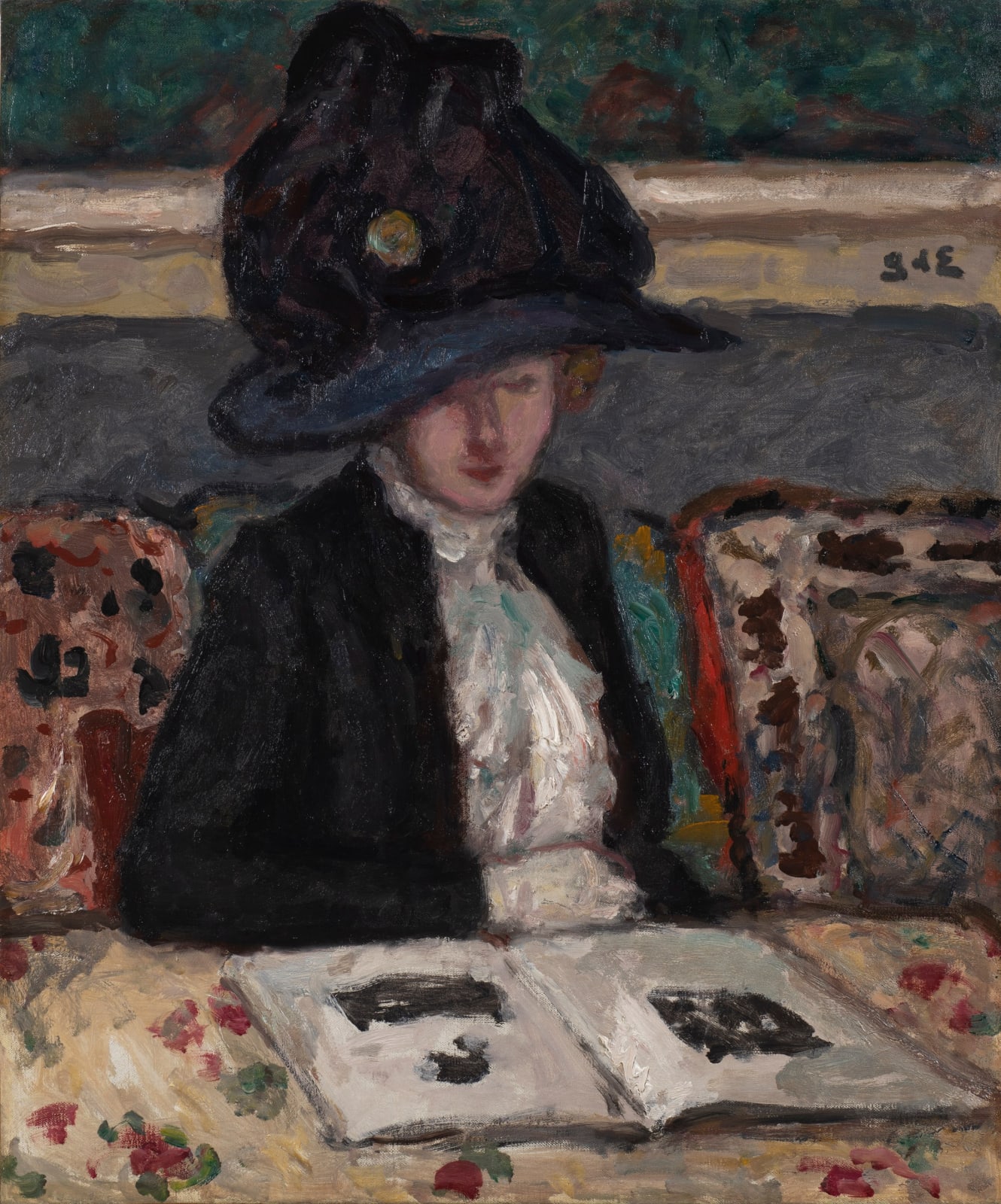Georges d'Espagnat
Femme au chapeau, c. 1906
Oil on canvas
25 5/8 x 21 1/4 in, 65 x 54 cm
Signed 'GdE' upper right
Sold
Throughout his career Georges d’Espagnat refused to be tied to one artistic circle. Experimenting with Impressionism, Fauvism and the Nabis as well as being influenced by Delacroix, Titian, Rubens, and...
Throughout his career Georges d’Espagnat refused to be tied to one artistic circle. Experimenting with Impressionism, Fauvism and the Nabis as well as being influenced by Delacroix, Titian, Rubens, and Poussin, d’Espagnat forged his own unique visual language that set him apart from his contemporaries.
As one of exhibitors in the first 1903 Salon d’Automne, d’Espagnat’s work stood aside from the conventional, as such he was part of the 1905 Salon d’Automne in which Fauvism coined its name. It was during this period that d’Espagnat created 'Femme au chapeau'. In the painting d’Espagnat balances elements of the bright fauvist colour palette with a warm intimiste setting. Fully emersed in her reading, D’Espagnat captures a passing moment with broad expressive brushstrokes. The luxuriously patterned cushions and table cloth add warmth to the inviting scene, displaying the artist’s sensibility to pattern and atmosphere.
From 1897 D’Espagnat exhibited at Galerie Durand-Ruel, established by the influential dealer Paul Durand-Ruel, who collected the work of some of the most influential Modernist artists including Manet, Gauguin, Monet, Renoir, Cezanne and Degas and introduced their work to an international platform.
D’Espagnat’s work is now held in many major international museums including the Musée d’Orsay in Paris and the Metropolitan Museum of Art in New York.
As one of exhibitors in the first 1903 Salon d’Automne, d’Espagnat’s work stood aside from the conventional, as such he was part of the 1905 Salon d’Automne in which Fauvism coined its name. It was during this period that d’Espagnat created 'Femme au chapeau'. In the painting d’Espagnat balances elements of the bright fauvist colour palette with a warm intimiste setting. Fully emersed in her reading, D’Espagnat captures a passing moment with broad expressive brushstrokes. The luxuriously patterned cushions and table cloth add warmth to the inviting scene, displaying the artist’s sensibility to pattern and atmosphere.
From 1897 D’Espagnat exhibited at Galerie Durand-Ruel, established by the influential dealer Paul Durand-Ruel, who collected the work of some of the most influential Modernist artists including Manet, Gauguin, Monet, Renoir, Cezanne and Degas and introduced their work to an international platform.
D’Espagnat’s work is now held in many major international museums including the Musée d’Orsay in Paris and the Metropolitan Museum of Art in New York.
